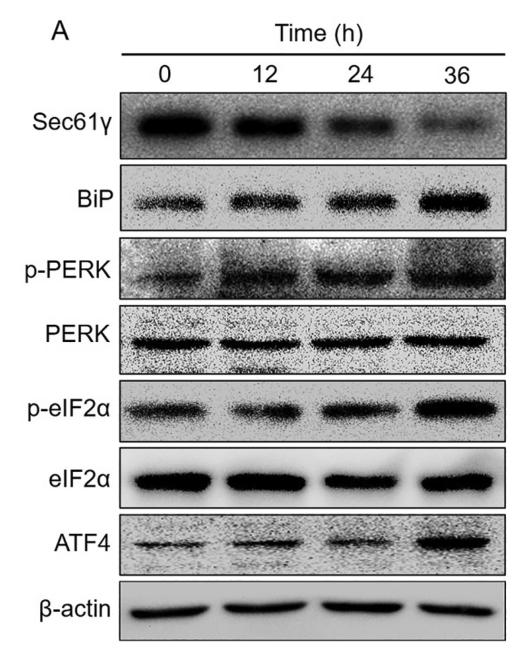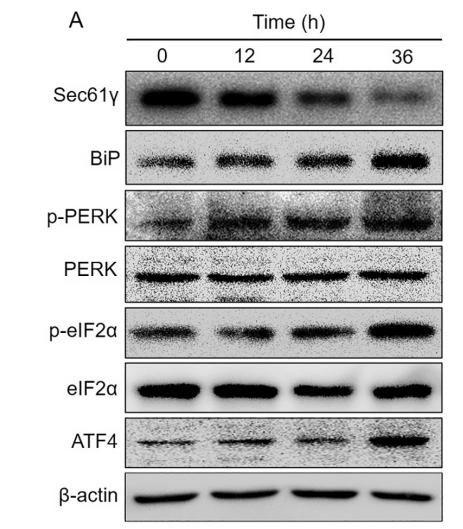SEC61G Antibody - #DF12136
| Product: | SEC61G Antibody |
| Catalog: | DF12136 |
| Description: | Rabbit polyclonal antibody to SEC61G |
| Application: | WB IHC |
| Cited expt.: | WB, IHC |
| Reactivity: | Human, Mouse, Rat |
| Prediction: | Pig, Zebrafish, Bovine, Horse, Rabbit, Dog, Chicken, Xenopus |
| Mol.Wt.: | 7.7 kDa; 8kD(Calculated). |
| Uniprot: | P60059 |
| RRID: | AB_2844941 |
Related Downloads
Protocols
Product Info
*The optimal dilutions should be determined by the end user. For optimal experimental results, antibody reuse is not recommended.
*Tips:
WB: For western blot detection of denatured protein samples. IHC: For immunohistochemical detection of paraffin sections (IHC-p) or frozen sections (IHC-f) of tissue samples. IF/ICC: For immunofluorescence detection of cell samples. ELISA(peptide): For ELISA detection of antigenic peptide.
Cite Format: Affinity Biosciences Cat# DF12136, RRID:AB_2844941.
Fold/Unfold
Protein transport protein Sec61 subunit gamma; SC61G_HUMAN; Sec61 gamma subunit; SEC61G; SSS1;
Immunogens
A synthesized peptide derived from human SEC61G, corresponding to a region within the internal amino acids.
- P60059 SC61G_HUMAN:
- Protein BLAST With
- NCBI/
- ExPASy/
- Uniprot
MDQVMQFVEPSRQFVKDSIRLVKRCTKPDRKEFQKIAMATAIGFAIMGFIGFFVKLIHIPINNIIVGG
Predictions
Score>80(red) has high confidence and is suggested to be used for WB detection. *The prediction model is mainly based on the alignment of immunogen sequences, the results are for reference only, not as the basis of quality assurance.
High(score>80) Medium(80>score>50) Low(score<50) No confidence
Research Backgrounds
Component of SEC61 channel-forming translocon complex that mediates transport of signal peptide-containing precursor polypeptides across endoplasmic reticulum (ER).
Endoplasmic reticulum membrane>Single-pass membrane protein.
Belongs to the SecE/SEC61-gamma family.
Research Fields
· Cellular Processes > Transport and catabolism > Phagosome. (View pathway)
· Genetic Information Processing > Folding, sorting and degradation > Protein export.
· Genetic Information Processing > Folding, sorting and degradation > Protein processing in endoplasmic reticulum. (View pathway)
· Human Diseases > Infectious diseases: Bacterial > Vibrio cholerae infection.
References
Application: WB Species: Human Sample: breast cancer cell
Application: WB Species: human Sample: MDA-MB-231 cells
Application: WB Species: human Sample:
Application: IHC Species: Human Sample: oropharyngeal cancer
Restrictive clause
Affinity Biosciences tests all products strictly. Citations are provided as a resource for additional applications that have not been validated by Affinity Biosciences. Please choose the appropriate format for each application and consult Materials and Methods sections for additional details about the use of any product in these publications.
For Research Use Only.
Not for use in diagnostic or therapeutic procedures. Not for resale. Not for distribution without written consent. Affinity Biosciences will not be held responsible for patent infringement or other violations that may occur with the use of our products. Affinity Biosciences, Affinity Biosciences Logo and all other trademarks are the property of Affinity Biosciences LTD.










